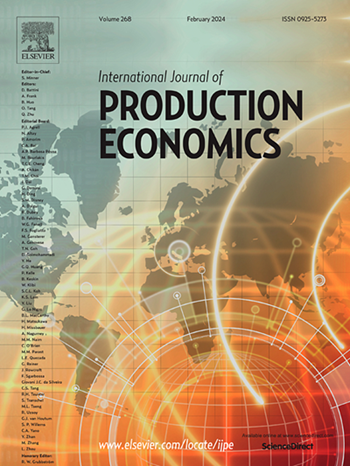Machine learning applied to forecasting the manufacturing time of new products prototypes and ETO products: An exploratory study
IF 10
1区 工程技术
Q1 ENGINEERING, INDUSTRIAL
引用次数: 0
Abstract
Industry 4.0 is a transformative initiative that integrates various technologies and reshapes industrial processes, production methods, and business models. However, forecasting future events within this paradigm shift presents significant challenges. Predicting the cycle time for new product development (NPD) in a dynamic and competitive environment, especially in a highly globalized market driven by innovation, is crucial. Previous research has shown that prototype manufacturing lead times are key parameters for predicting NPD times-to-market. This study investigates the predictive capabilities of artificial intelligence algorithms in estimating manufacturing lead times under varying part geometries and materials at an aerospace and medical equipment company. By leveraging predictive analysis and machine learning techniques, specifically Artificial Neural Networks (ANN), Support Vector Machine (SVM), and Random Forest (RF) algorithms, the proposed methodology demonstrates its efficacy and variations. The results show that top-performing models achieve an accuracy rate exceeding 87 % and an average absolute error of less than one day, which have significant practical benefits for project production planners. They can utilize the most popular AI frameworks on easier-to-use programming platforms to estimate the time required to manufacture their prototypes, predict their new product development (NPD) cycle times, and negotiate lead times for in-house and third-party manufacturing more effectively, thereby improving project planning and delivery.
机器学习在新产品原型和ETO产品制造时间预测中的应用:探索性研究
工业4.0是一项变革性的倡议,它整合了各种技术,重塑了工业流程、生产方法和商业模式。然而,在这种范式转变中预测未来事件带来了重大挑战。在充满活力和竞争的环境中,特别是在高度全球化的创新驱动市场中,预测新产品开发(NPD)的周期是至关重要的。先前的研究表明,原型制造提前期是预测新产品上市时间的关键参数。本研究调查了一家航空航天和医疗设备公司人工智能算法在不同零件几何形状和材料下估计制造交货时间的预测能力。通过利用预测分析和机器学习技术,特别是人工神经网络(ANN),支持向量机(SVM)和随机森林(RF)算法,所提出的方法证明了其有效性和变化。结果表明,性能最好的模型准确率超过87%,平均绝对误差小于1天,对工程生产计划人员具有显著的实际效益。他们可以在易于使用的编程平台上利用最流行的人工智能框架来估计制造原型所需的时间,预测新产品开发(NPD)周期时间,并更有效地协商内部和第三方制造的交货时间,从而改进项目规划和交付。
本文章由计算机程序翻译,如有差异,请以英文原文为准。
求助全文
约1分钟内获得全文
求助全文
来源期刊
CiteScore
21.40
自引率
7.50%
发文量
266
审稿时长
52 days
期刊介绍:
The International Journal of Production Economics focuses on the interface between engineering and management. It covers all aspects of manufacturing and process industries, as well as production in general. The journal is interdisciplinary, considering activities throughout the product life cycle and material flow cycle. It aims to disseminate knowledge for improving industrial practice and strengthening the theoretical base for decision making. The journal serves as a forum for exchanging ideas and presenting new developments in theory and application, combining academic standards with practical value for industrial applications.

 求助内容:
求助内容: 应助结果提醒方式:
应助结果提醒方式:


